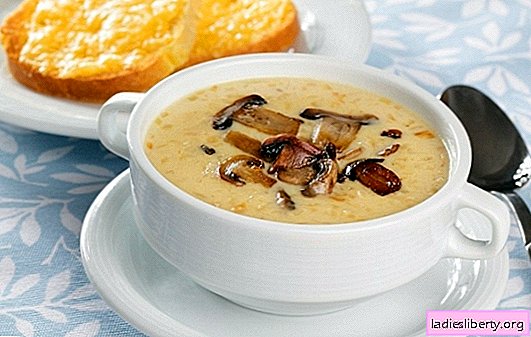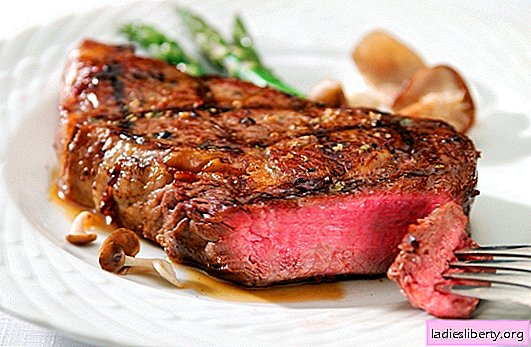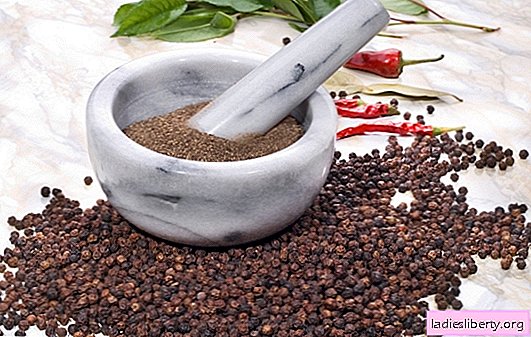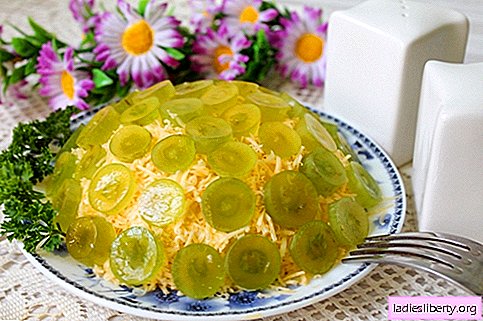
Honeysuckle is a shrubbery strewn with juicy bright berries with a rich aroma and taste.
The rich vitamin and mineral composition makes the plant very valuable in traditional medicine.
Honeysuckle has many useful properties, it favorably affects the work of all body systems.
In addition, berries have found application in other areas - cooking, cosmetology. Do not forget that, like any medicinal plant, honeysuckle also has contraindications. These "buts" to use must be known to avoid unpleasant consequences.
The chemical composition of aromatic fruits
In folk medicine, honeysuckle has been used to combat many ailments for a long time. The value of the fruits lies in their composition, which contains really valuable substances and trace elements.
The composition includes:
• ascorbic acid, and it is no less than in citruses;
• other vitamins - A, P, group B;
• glucose and fructose;
• acids of organic origin;
• aluminum, potassium, iodine, calcium, manganese and other mineral components.
It is important to note, that the composition of the fruit will be affected by exactly where the plant grew. In the case when the honeysuckle grows in a hot and dry climate, the berries will taste bitter, the content of sugars and tannins will increase. Under wet conditions, the amount of vitamin C in the plant will increase. In a temperate climate, there will also be more monosaccharides and ascorbic acid.
Honeysuckle: beneficial properties of fruits
As already mentioned, honeysuckle has a beneficial effect on the body. However, many do not know what exactly the berries give and how much is useful in them.
Honeysuckle: useful properties
1. Normalizes the liver and gall bladder.
2. It has a general strengthening effect, increases the body's resistance to all kinds of infections.
3. Relieves a headache.
4. Strengthens the walls of blood vessels.
5. Improves digestion, normalizes the work of the digestive tract.
6. It removes salts of heavy metals, toxins and toxins and the body.
7. Strengthens memory.
8. It has diuretic properties and is prescribed for the formation of kidney stones.
9. It is characterized by anti-inflammatory and antiseptic properties.
10. Improves vision.
11. Promotes the normalization of blood pressure.
There are only 30 Kcal per 100 grams of berries, so the fruits are useful for those who follow a diet. Honeysuckle regulates the digestive tract, enhances the secretion of gastric juice. A person will lose kilograms, while not feeling weakness and malaise. Despite the fact that honeysuckle has practically no contraindications, sometimes you need to take a break in its use.
Honeysuckle in folk medicine
The healing properties of the fruits were noticed a very long time ago. It is worth noting that the body benefits not only honeysuckle berries, but also other parts of the plant.
Honeysuckle: beneficial properties in alternative medicine prescriptions
1. For sore throat. 5-6 fresh leaves of the plant must be steamed with boiling water (approximately 150 ml). After 15 minutes, the product is put on fire, brought to a boil, then immediately removed from the stove, filtered. The resulting liquid must be gargled 3-4 times a day (in the form of heat).
2. With a headache. Dry fruits (200 grams) are transferred to a thermos, 200 ml of boiling water is added there. The drink must be brewed for at least 4 hours. Drink it 3 times a day, 50 ml, preferably before meals.
3. To strengthen memory. Dried berries (about 2 tablespoons) are steamed with 250 ml of boiling water. The product must be held for 15 minutes in a water bath, then insist 2 hours, cool and strain. The resulting amount of the drink is divided into 2 equal servings, one drink in the morning, the other before bedtime.
Application in home cosmetology
Honeysuckle useful properties can be used in beauty recipes. The rich nutritional composition of the plant strengthens hair, improves skin condition and even prevents the first signs of aging. In addition, the anti-inflammatory properties of the fruit are used in the fight against lichen on the epidermis.
Beauty Recipes
1. Nourishing face mask. 20 fruits of honeysuckle must be well rubbed with a wooden spoon to get a mushy mass. A few drops of rosemary oil and 15 grams of yeast (dry) are added to it. Everything is thoroughly mixed. The resulting mask is applied to the neck area and to the face, after 20 minutes the skin is rinsed with warm water. This cosmetic procedure cleanses the pores, increases the elasticity of the dermis and maintains the elasticity of the skin.
2. Rinse aid for hair. Leaves of honeysuckle and chamomile (2 to 1 ratio) are steamed with boiling water so that the water slightly covers the grass collection. The tool is infused for a day, then it is well filtered through gauze. The resulting liquid is recommended to rinse the hair after washing the hair 2 times a week. Curls will become stronger and stronger, gain a healthy radiant shine.
Honeysuckle in cooking
Honeysuckle fruits are enriched with a large number of micronutrients. It has been proven that vitamins are not lost after heat treatment. In cooking, berries are most often used for desserts. Not only a child, but also an adult will be delighted with such sweets.
Fragrant Vitamin Mousse
The following ingredients are prepared:
• sugar (approximately 100 grams);
• semolina (3 tablespoons);
• honeysuckle berries (250 grams);
• cooled water is boiled (500 ml).
Step by step recipe
1. Berries must be carefully crushed, squeeze the juice and pour into a separate glass.
2. The remaining cake is poured with water and boiled for 5 minutes over medium heat, the broth must be filtered.
3. The remaining liquid is added semolina, sugar, boiled thick porridge.
4. When the porridge is ready, you need to add the juice of the berries to it and beat everything with a mixer until a homogeneous mass is formed. Mousse is ready.
Tasty jam
Ingredients:
• water (200 ml);
• sugar (800-900 grams);
• honeysuckle - 1 kg of washed berries.
Step by step recipe
1. The first thing to do is syrup. The water is brought to a boil, then sugar is added there and boiled until it is completely dissolved.
2. While the syrup is boiling, add the fruits of honeysuckle to it.
3. After boiling, the jam is boiled for another 5 minutes - you can pour it into jars.
Honeysuckle: contraindications
Before you eat berries in any form, you need to know a few simple rules and precautions.
Honeysuckle: contraindications
1. Small children under the age of 7 years to eat berries is not recommended.
2. For women during lactation and pregnancy, it is advisable to temporarily abandon honeysuckle, since the reaction of the child's body is impossible to predict.
3. If there is an individual intolerance to the fruits, it is forbidden to use them both inside (for treatment, in desserts), and externally (for wounds, burns).
Honeysuckle has a lot of useful properties. Despite this, it is impossible to overdo it with the use of berries. It must be remembered that the most valuable product can cause malaise if you eat more than expected.











